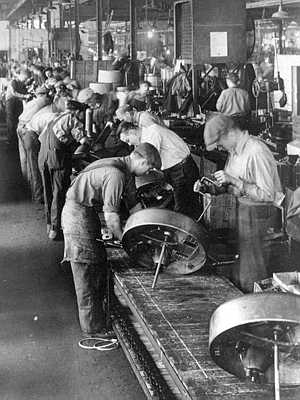Lev Manovich

We Have Never Been Modular
--------------------------------------------------------
Thanks to everybody who commented on my text ³Remix and Remixability²
(November 16, 2005). It was provoked by reading about web 2.0 and all the
exitement and hype (as always) around it, so indeed I am ³following the
mainstream view² in certain ways. But I would like to make it clear that
ultimately we are talking about something which does not just apply to RSS,
social bookmarking, or Web Services. We are talking about the logic of
modularity which extends beoynd the Web and digital culture.
Modularity has been the key principle of modern mass production. Mass
production is possible because of the standarisation of parts and how they
fit with each other - i.e. modularity. Although there are historical
precedents for mass production, until twentieth cenrtuy they have separate
histroical cases. But soon after Ford installs first moving assembly lines
at his factory in 1913, others follow, and soon modularity permuates most
areas of modern society. ("An assembly line is a manufacturing process in
which interchangeable parts are added to a product in a sequential manner to
create an end product.") Most products we use are mass produced, which means
they are modular, i.e. they consist from standardised mass produced parts
which fit together in standardised way. Moderns also applied modulary
principle outside of factory. For instance, already in 1932 longe before
IKEA and Logo sets belgian designer Louis Herman De Kornick developed
first modular furniture suitable for smaller council flats being built at
the time...
Originally posted on Rhizome.org Raw by Lev Manovich



